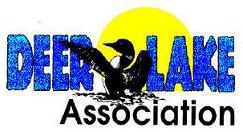
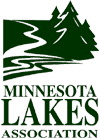
Deer Lake Association
A member of the Minnesota Lakes Association
| Spotlight |
|---|
|
|
Diagnostic Study
of
Deer and Pokegema Lakes
is now completed!
(The report is over 200 pages and may take time to download)
******
IWLP Sponsored Diagnostic Study
on
Deer and Pokegama Lakes
****
Midterm Report from John Downing, Nov. 2011
In 2010 the Itasca Water Legacy Partnership (IWLP) was awarded a major grant from the Minnesota PCA (Clean Water Partnership) of $249,986 for a three-year diagnostic study of the water in Deer and Pokegama Lakes. The three local organizations participating in the grant are IWLP, Itasca Community College and the Itasca County Soil and Water Conservation District. This diagnostic study will analyze current nutrient and suspended sediment concentrations. The study will determine sources of nutrients and sediments, and the distribution of the sources and losses across the watersheds of Deer and Pokegama Lakes. It will figure a water and nutrient budget: how and why the lake levels vary the way they do, what potential the waters have for detriment, and what extent water quality has sustained current development. On the basis of this scientific research, Best Management Practices (BMT) can be developed to help protect and preserve the fine water quality we enjoy today.
A match of $463,530 is required for this grant, but the vast majority will come from volunteer hours and equipment usage (boats mostly, plus gear and devices). This is truly a community science experiment!
We are now in the second year of the project and things are going quite well. The project is overseen by limnologists John Downing, Jack Jones and hydrologist Bill Simpkins; lake resident volunteers guided by SWCD/ICC lab scientists and student techs have been busy measuring rainfall, stream input/output, and ground water. Frequent testing of the water from all these sources has also been done, including from multiple depths in the middle of the lakes. A good amount of data has been collected, and a few wrinkles have been ironed out.

The biggest challenge has been understanding the influence of the groundwater, both as input and output, and hard to measure! Seepage meters (see photographs below) have been placed at 7 locations in Deer and 8 on Pokegama. Each location has six meters (metal barrels sunk into the lake bottom with a hose output) which collect water seeping (in or out) from the ground into plastic bags which are centralized in a protective housing under the water. This water is measured in order to calculate a seepage rate, while nearby piezometers collect ground water for testing. Some locations have a higher water flux rate, while some (with clay bottom) are slower. The geography of the lakeshore is also influential, with bays acting as better producers of groundwater than points. Private wells around the lake are also being measured for elevation (indication where the aquifer is) and tested for their nutirent quality (and other parameters), giving an idea of the influence of the deeper aquifers which may intercept the lake. All these variables are being calculated.
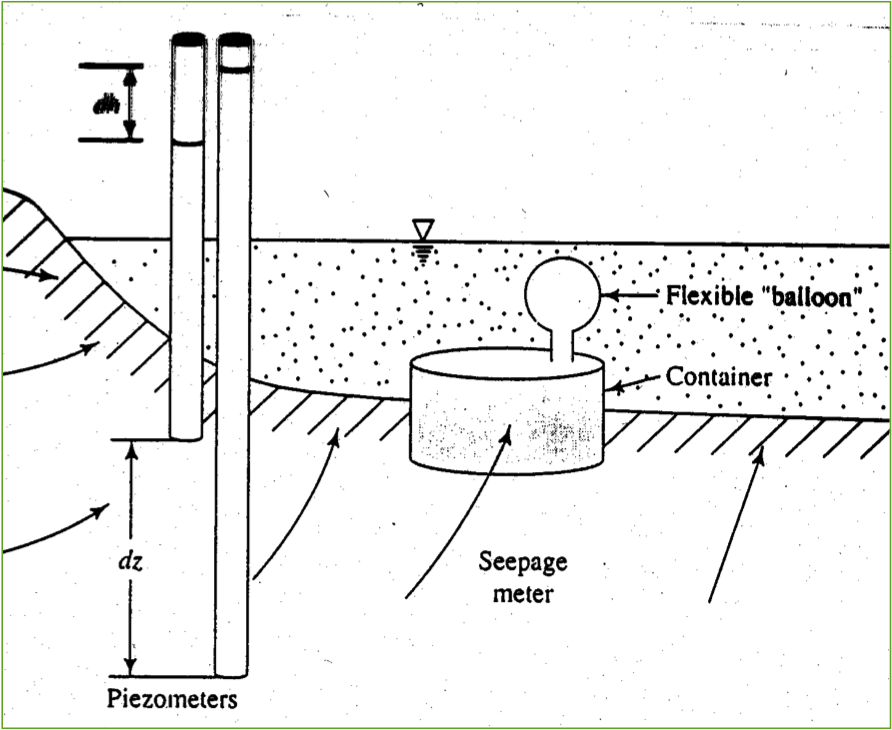 (our seepage meters are connected to hoses which lead to "balloons" (bags) in a protective housing).
(our seepage meters are connected to hoses which lead to "balloons" (bags) in a protective housing).
One unanticipated source of groundwater is the many springs that can be found IN the lakes (there are also springs that flow from land into the lakes). These are more like point-sources rather than general seepage, and have proved difficult not only to locate and inventory, but also measure and collect samples for testing.
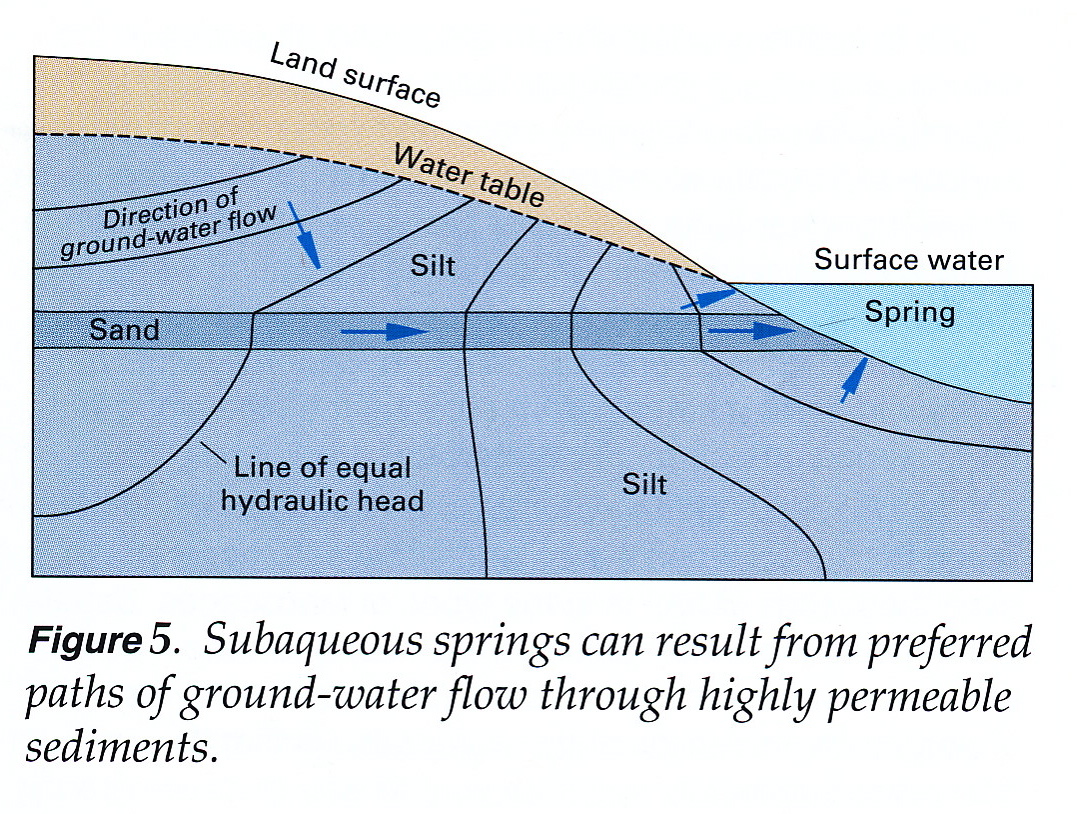
HERE IS WHERE ALL LAKE RESIDENTS CAN HELP!! Please, if you know of any lake springs near your home, call in their location to the lake study coordinator so an inventory can be established. You will feel them with your feet: the water is much colder from a spring; they usually emerge from a "hole," and are often found multiple in reed areas (undisturbed lake bed). You will see them during freeze-up and ice-out, along the shore, where the water is slow to freeze and quick to ice-out. A tech crew will come and do their best to measure and sample the water input. This will happen during the next summer, as the Community Diagnostic Science Project procedes!
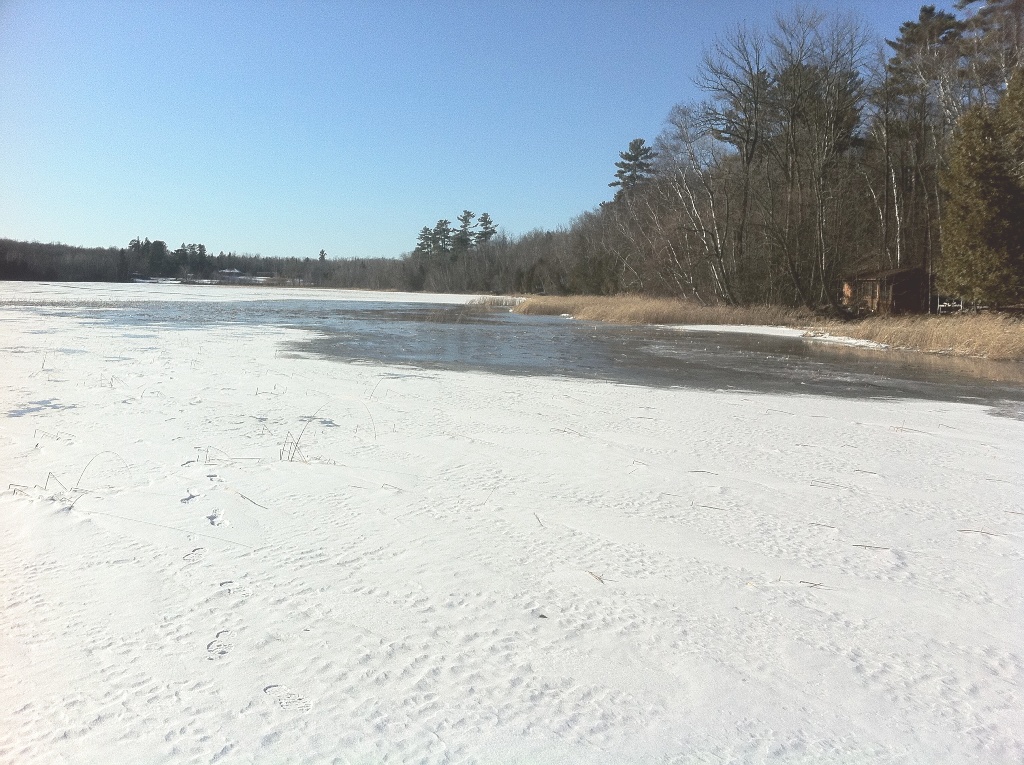
While the rest of the lake is frozen solid,
a cluster of springs keeps this area of shoreline wet.
Thanks for your assistance. Best format for documenting springs would be by written description with a rough map drawn, noting nearby landmarks. If you have a GPS, you can report the coordinates, or even place a driveway marker!
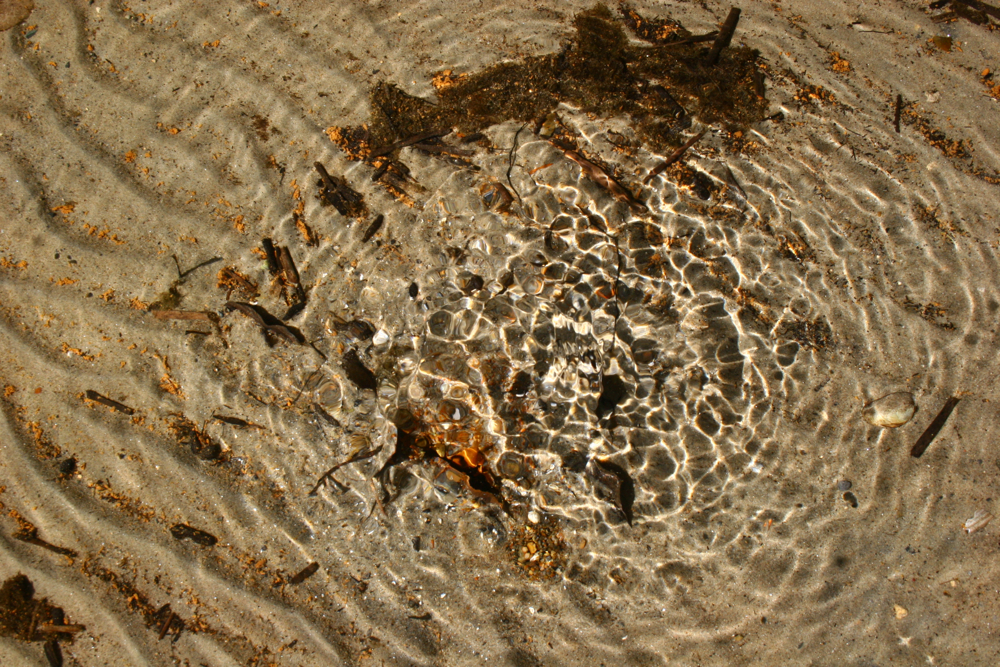
A shallow water spring in summer. Photo by Mary Spratt
Please contact the diagnostic study coordinators with your spring reports:
Deer Lake:
Janna Nemeth 246-2749
**
Pokegema Lake:
Randy McCarty
********
Here are some photos of the Diagnostic Project from the Summer, 2011

ICC techs identify and place measuring devices on all stream inputs and outputs.

A volunteer measures the flow by the water's height in the culvert twice a week or after rainfall.

Techs collect water chemistry data with sophisticated devices twice a month, taking samples for testing.

Rainfall is measured by volunteers using buckets and a graduated cylinder.
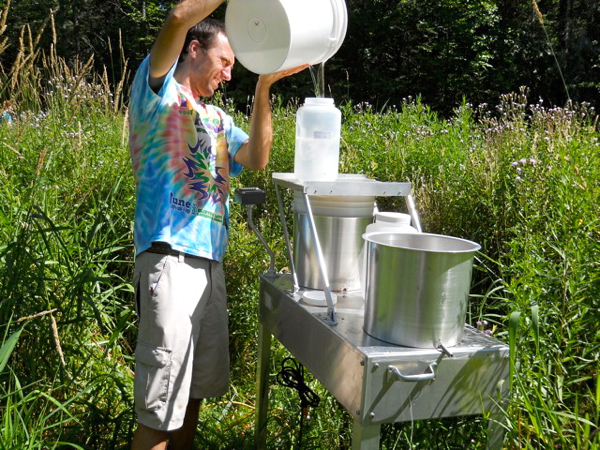
Techs use a fancy collector for sampling rain water.
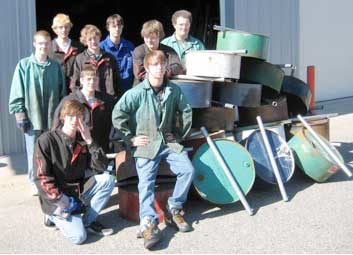
Deer River and Grand Rapids HS welding classes made the seepage meters.

A seepage meter in the lake with hose connection leading to a bag (balloon) in a protective box.

A six-pack of meters are hosed down the line to a protective box.

A volunteer measures the water collected by each meter.

Out in the boat, weather and lake conditions are measured before taking water samples for testing.

Secchi disk measures the water clarity.

A multi-sensor "sonde" is prepared for lowering slowly all the way to the bottom to test for a wide assortment of data, including the depth of the "thermocline" (where temperature changes more rapidly) so that samples can be taken above and below, as well as at the surface.

The probe's data reads out its information.

This device will snap shut when lowered to the correct depth and collect a sample of water from down below.

Water is collected in sterilized jars for transport back to the lab.
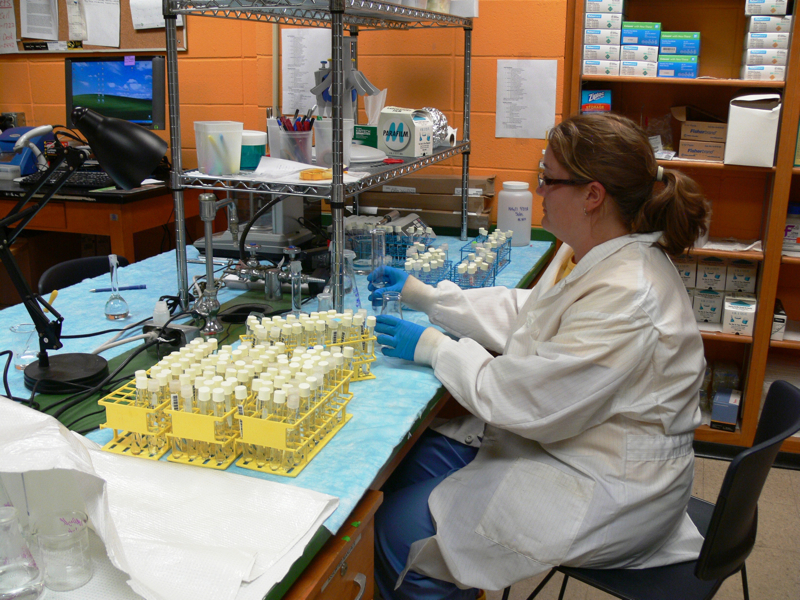
Back at the ICC Water Lab the samples are tested for a number of things.

Data from the multi-sensor probe is downloaded into a computer. The water is tested for total nitrogen, total phosphorus, total suspened solids, dissolved organic carbon, chlorophyll a, true color, PH, and alkalinity.
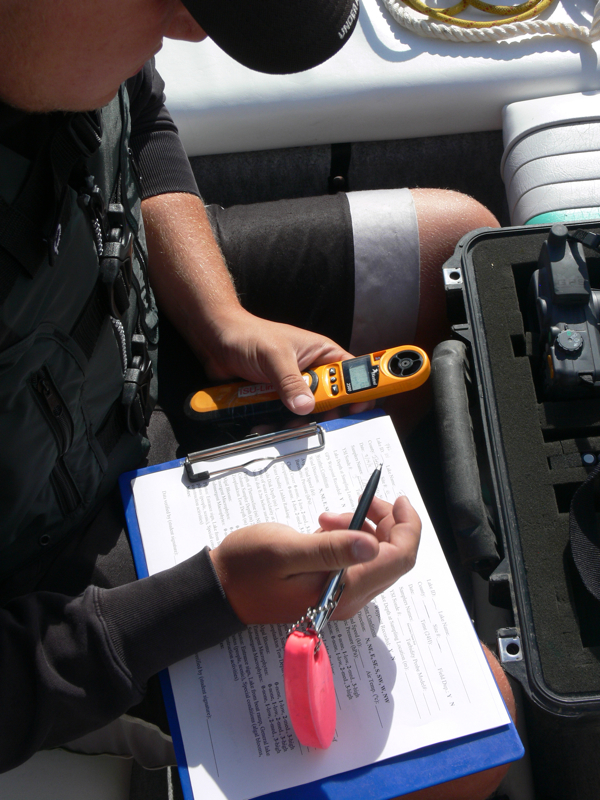
And of course, ALL the data from ALL the phases of our Community Science Project are ALL diligently recorded from the bottom up.
*********
Past Reports and News:
Deer Lake Study Funded – Volunteers Needed
Last summer the DLA donated $15,000 to the Itasca Water Legacy Project (IWLP) last summer. The funds included $9000 from association members and $6000 from the Deer Lake Endowment and Preservation Fund. The Itasca Water Legacy Project (IWLP) is a unique partnership for lake associations,private and governmental individuals and groups to provide services-testing and monitoring water quality and to provide information to local and public agencies. Major work is now starting and you are needed!
Minnesota Pollution Control Agency has approved a grant funding a 3 year study of Deer Lake. Three local organizations participating in the grant are, the IWLP, Itasca Community College and the Itasca County Soil and Water Conservation District. This diagnostic study will analyze current nutrient and suspended sediment concentrations. The study will determine sources of nutrients and sediments, and the distribution of the sources and losses across the watershed of Deer Lake.
Many volunteers are needed for this study which employs four different devices. Students at Grand Rapids and Deer River High Schools are fabricating some of the sampling/monitoring equipment. These apparatuses will then need to be installed and monitored throughout the year. Water sampling in tributaries and in the lake itself will also be done. There will be training for volunteers coming up sometime this spring. Pokegama Lake is also being studied in the same manner and the DLA plans to partner with the Pokegama Lake Assoc for some aspects of the work.The exact work plan has not yet been developed, but the DLA would like to get a list of volunteers that are willing to help with some of the work. Please let us know if you would like more information on what the study will entail. There is an executive summary from last year’s grant application and a broad list of volunteer needs that can be emailed to prospective volunteers. Please notify Janna Nemeth at 218-246-2749, or email; janna_nemeth@deerlakeassn.net if interested. Note following invitation:
IWLP COMMUNITY MEETING - Grand Rapids Library, 140 NE 2nd St. May 20th at 7 p.m. I think after you read this invitation, you will agree that this is a very important meeting for our community and one that you will not want to miss.
Itasca County has 950 lakes with 1,850 miles of rivers and immense underground aquifers making them one of our most important community resources. Today they remain clean and plentiful. One doesn’t have to look very far to see other communities who now live with dirty lakes, unclean rivers and polluted aquifers. TEAM UP FOR CLEAN WATERS – and come learn what our community is doing about ensuring the future of our local waters. Founded in 2005, we have built a solid membership, strong community relationships and secured almost $1,000,000 in funding for research, projects, education and jobs in our community. Our members are homeowners and members of the business, education or government community. We work together to ensure our waters remain pristine through smart use, development and preservation.
At the meeting, you will meet our president, David Lick, who will provide the background - explaining IWLP’s mission, membership and a quick review of several completed projects. Then Dr. John Downing, well known Limnologist and Faculty Member, Iowa State University (CV at http://www.public.iastate.edu/~downing/JADCV.pdf ) will describe, in detail, the Deer and Pokegama Lake study. As Dr. Downing will explain, the focus of the study is to determine how these very healthy lakes function today and to make recommendations to the community on ways to keep them healthy in the future. The science behind the study includes a 2-year analysis of nutrient input, outflow and balance in each lake that will be performed by students, professionals and community volunteers. As members of the Lake Associations from these lakes – you will find this particularly relevant and informative.
So please plan on attending if you want to know more about Itasca Waters, want to know more about the Deer and Pokegama Lake study, and are interested in what you can do to be part of TEAM UP FOR CLEAN WATERS. You will enjoy the look into one of our community’s top resources – the lakes, streams and rivers – that make this such a special place to live.
The Itasca Water Legacy Partnership Board, David Lick, President